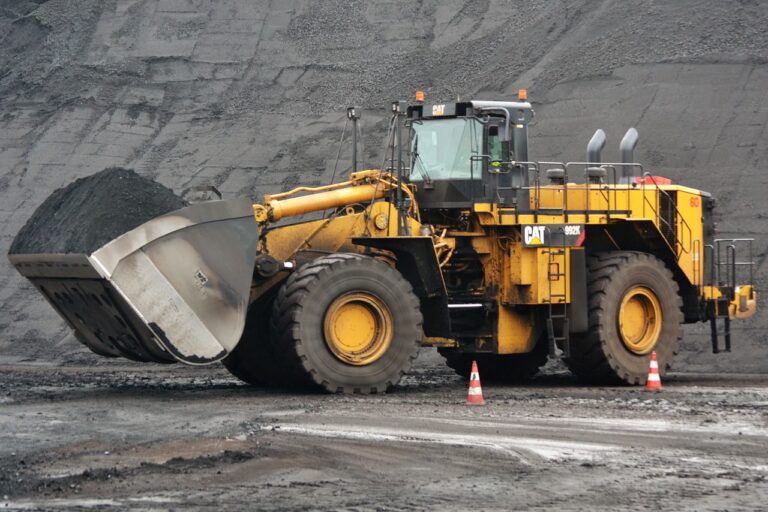SOUTH AFRICA COAL

South Africa’s indigenous energy resource base is dominated by coal. Internationally, coal is the most widely used primary fuel, accounting for about 36 percent of the total fuel consumption of the world’s electricity production. About 77 percent of South Africa’s primary energy needs are provided by coal. This is unlikely to change significantly in the next two decades owing to the relative lack of suitable alternatives to coal as an energy source. Many of the deposits can be exploited at extremely favorable costs and, as a result, a large coal-mining industry has developed.
In addition to the extensive use of coal in the domestic economy, about 28 percent of South Africa’s production is exported, mainly through the Richards Bay Coal Terminal, making South Africa the fourth-largest coal exporting country in the world.
South Africa’s coal is obtained from collieries that range from among the largest in the world to small-scale producers. As a result of new entrants, operating collieries increased to 64 during 2004. Of these, a relatively small number of large-scale producers supply coal primarily to electricity and synthetic fuel producers.
About 51 percent of South African coal mining is done underground and about 49 percent is produced by open-cast methods. The coal-mining industry is highly concentrated with five companies accounting for 85 percent of saleable coal production.
About 21 percent of the run-of-mine coal produced is exported, and 21 percent is used locally (excluding power-station coal). The rest is not saleable and is discarded.
The remainder of South Africa’s coal production feeds the various local industries:
. 62 percent is used for electricity generation;
. 23 percent for petrochemical industries (Sasol);
. 8 percent for general industry;
. 4 percent for the metallurgical industry (Mittal); and
. 4 percent is purchased by merchants and sold locally or exported.
The key role played by South Africa’s coal reserves in the economy is illustrated by the fact that Eskom ranks first in the world as a steam coal user and seventh as an electricity generator. Sasol is the largest coal-to-chemicals producer.
By international standards, South Africa’s coal deposits are relatively shallow with thick seams, which make them easier and, usually, cheaper to mine. At the present production rate, there should be more than 50 years of coal supply left.
As well as domestic production facing difficulty, the ramifications of the pandemic for the broader seaborne market were also bearish, Prevost said, highlighting lower prices and production in other key producing nations Indonesia, Australia and Russia, as well as weaker demand from China.
Looking ahead, Prevost discussed the relative stagnation in South African coal production because of limited new investment in bringing new mines online.
Prevost said over the last 10 years, total production had remained around 250 million mt, showing no signs of growth in that time.
Post-coronavirus supply and demand
India is by far the largest export destination for South African coal, so it would be no surprise that panelists closely linked the recovery of South Africa’s export business to Indian demand.
Divyesh Kalan, Executive Head at Makoya Advisory, Puneet Gupta, CEO of CoalShastra, Sajid Hussain, Chief Representative for Pakistan at VISA Resources, Greg Hunter, Director for Africa business development at Noble Group, and Jacques Jonker, Managing Director of Coalvest, discussed the current opportunities in the seaborne market.
The coronavirus’ impact on Indian coal demand was a key talking point. India’s GDP had been forecast to fall in the current (April-March) financial year, Gupta said.
Since the onset of the pandemic, coal imports by India have dropped sharply year on year, but rising steel prices had signaled some positive indicators more recently as India primarily uses South African coal for its steel and sponge iron sectors, Gupta said.
This had led to an increase in trade over the last few months, with Gupta describing recent trade in South African coal to India as more of a “V-shaped” recovery.
Indian domestic production to have less impact on South Africa

In recent months, the Indian government has taken steps to raise domestic coal production with a view to reducing its import dependency. The panelists argued that despite this initiative, South African coal exports would likely find a home in India for the foreseeable future.
“The fact of the matter is [India] doesn’t have the quality of coal wanted by the sponge iron sector,” Gupta said. “It will not be a direct impact on the South African market.”
Instead, the increase in domestic production would have a greater impact on the cement and power sectors, he added.
Noble’s Hunter said: “South African coal is very complimentary in spec to the Indian market… there will always be a home for South Africa coal in India.”
Furthermore, the upcoming festival period in India was adding further bullish price sentiment to the market, Gupta said.
Looking at other emerging markets for South African coal, Vietnam was briefly discussed as its growing demand for seaborne coal had become one of the few bright spots of the last year.
Demand might slow a little, Hunter said, as buyers in Vietnam had been purchasing large volumes of coal and would be well stocked, but ultimately it would continue to be a source of import demand for the time being.